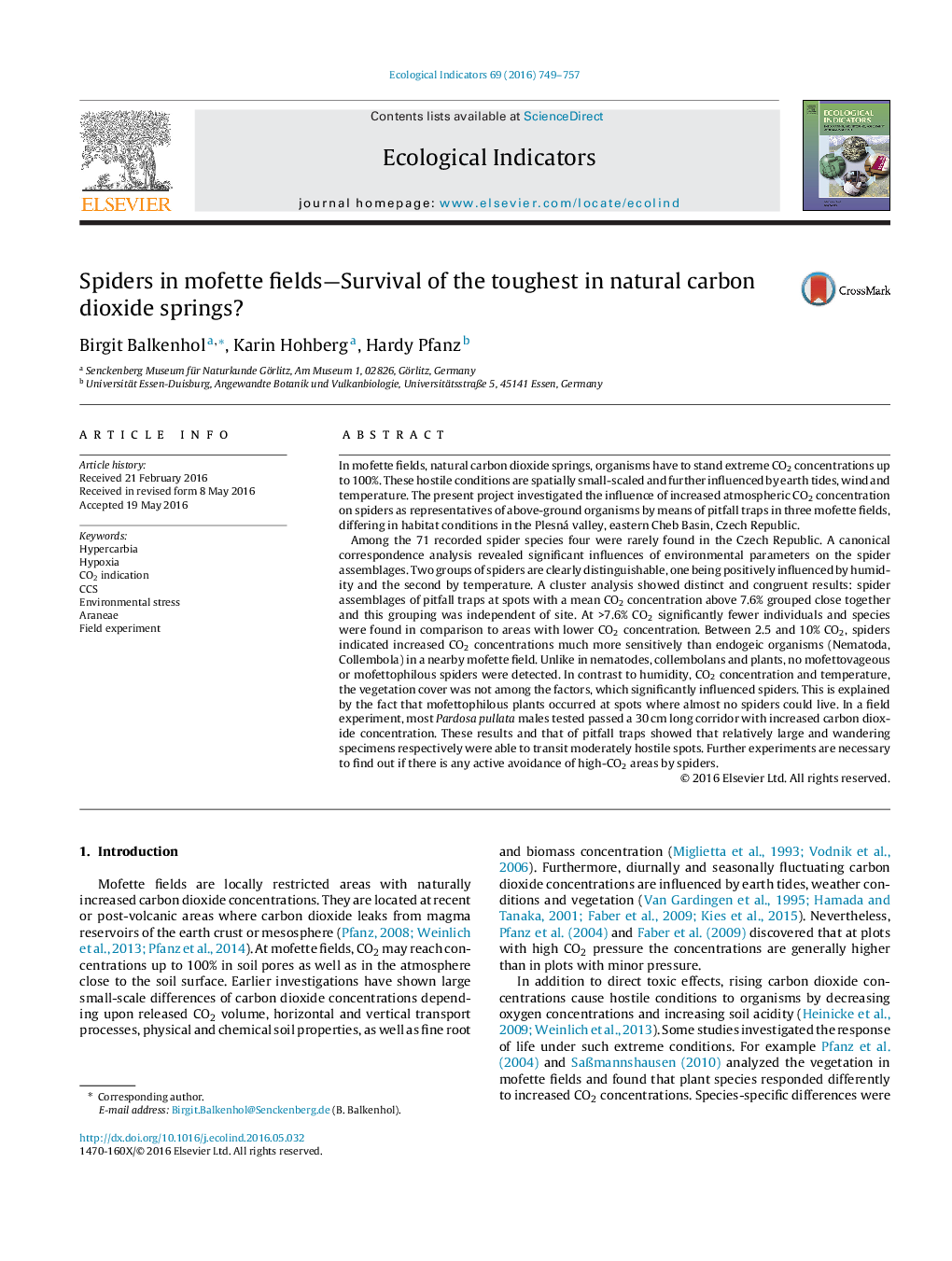| Article ID | Journal | Published Year | Pages | File Type |
|---|---|---|---|---|
| 6293340 | Ecological Indicators | 2016 | 9 Pages |
Abstract
Among the 71 recorded spider species four were rarely found in the Czech Republic. A canonical correspondence analysis revealed significant influences of environmental parameters on the spider assemblages. Two groups of spiders are clearly distinguishable, one being positively influenced by humidity and the second by temperature. A cluster analysis showed distinct and congruent results: spider assemblages of pitfall traps at spots with a mean CO2 concentration above 7.6% grouped close together and this grouping was independent of site. At >7.6% CO2 significantly fewer individuals and species were found in comparison to areas with lower CO2 concentration. Between 2.5 and 10% CO2, spiders indicated increased CO2 concentrations much more sensitively than endogeic organisms (Nematoda, Collembola) in a nearby mofette field. Unlike in nematodes, collembolans and plants, no mofettovageous or mofettophilous spiders were detected. In contrast to humidity, CO2 concentration and temperature, the vegetation cover was not among the factors, which significantly influenced spiders. This is explained by the fact that mofettophilous plants occurred at spots where almost no spiders could live. In a field experiment, most Pardosa pullata males tested passed a 30Â cm long corridor with increased carbon dioxide concentration. These results and that of pitfall traps showed that relatively large and wandering specimens respectively were able to transit moderately hostile spots. Further experiments are necessary to find out if there is any active avoidance of high-CO2 areas by spiders.
Keywords
Related Topics
Life Sciences
Agricultural and Biological Sciences
Ecology, Evolution, Behavior and Systematics
Authors
Birgit Balkenhol, Karin Hohberg, Hardy Pfanz,
